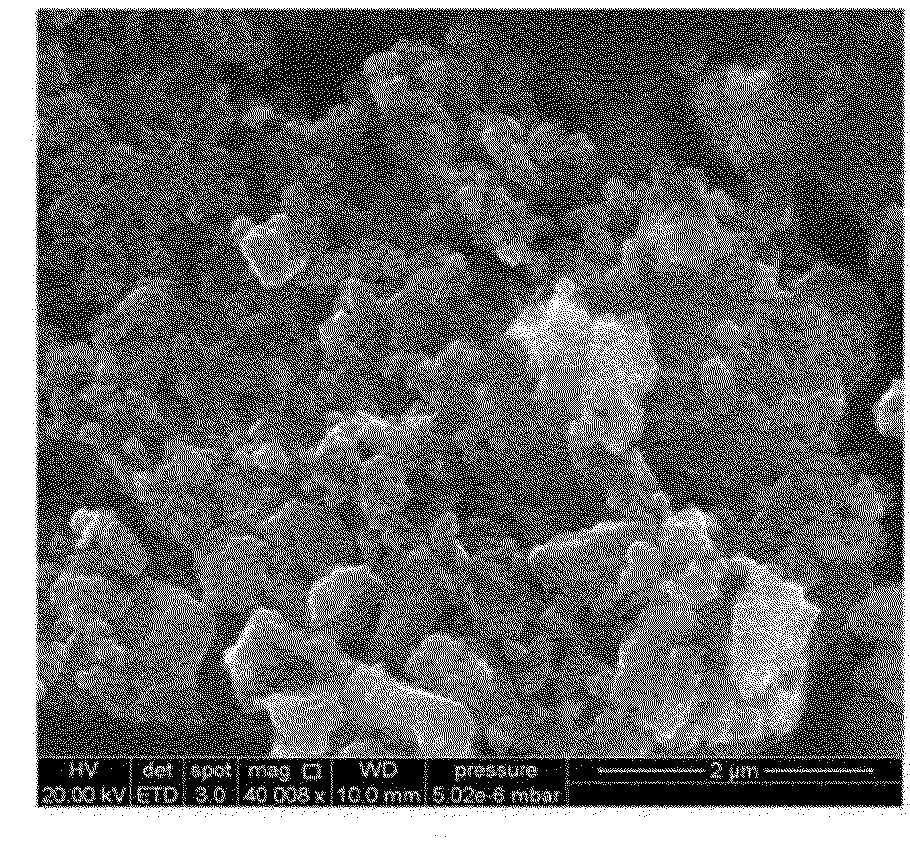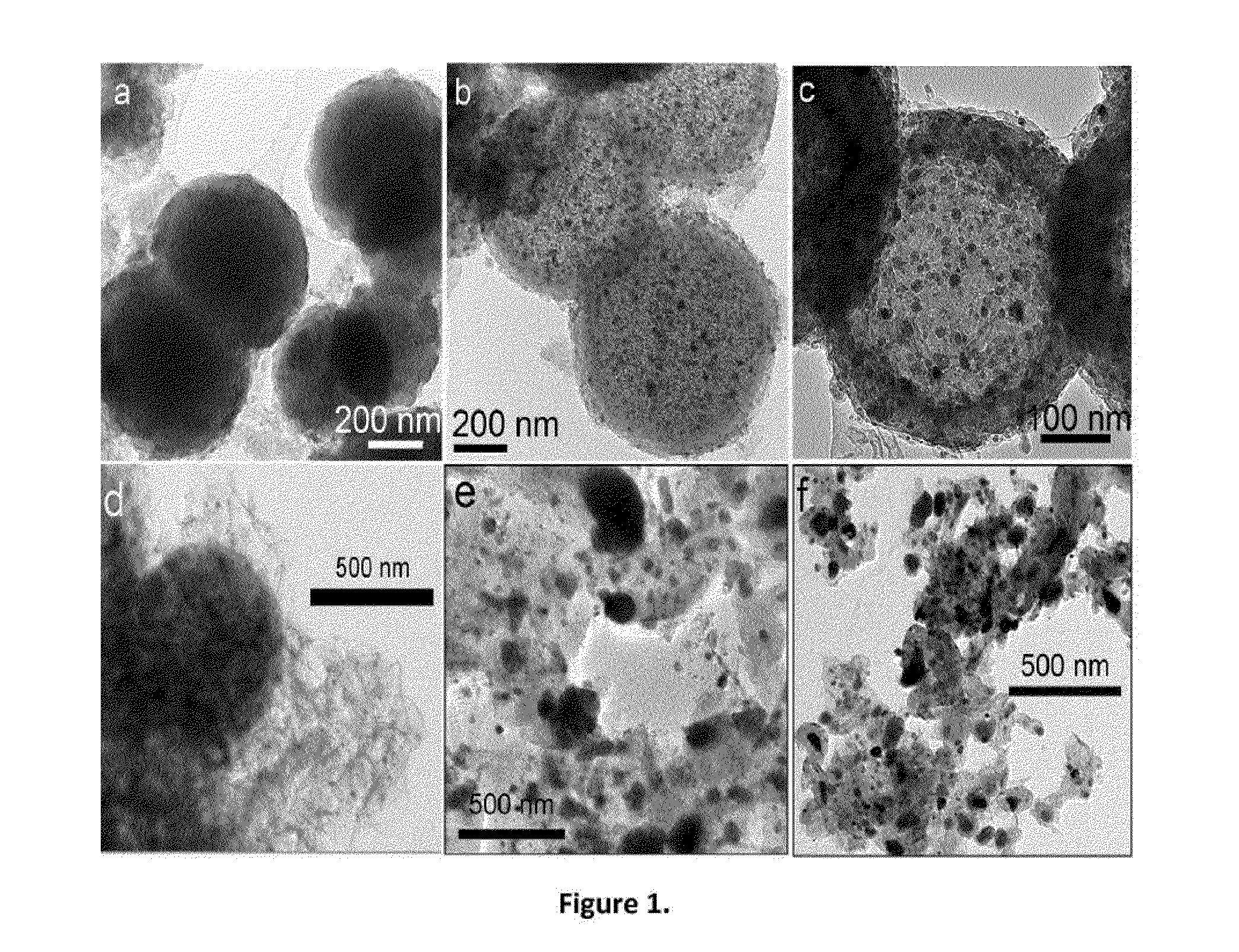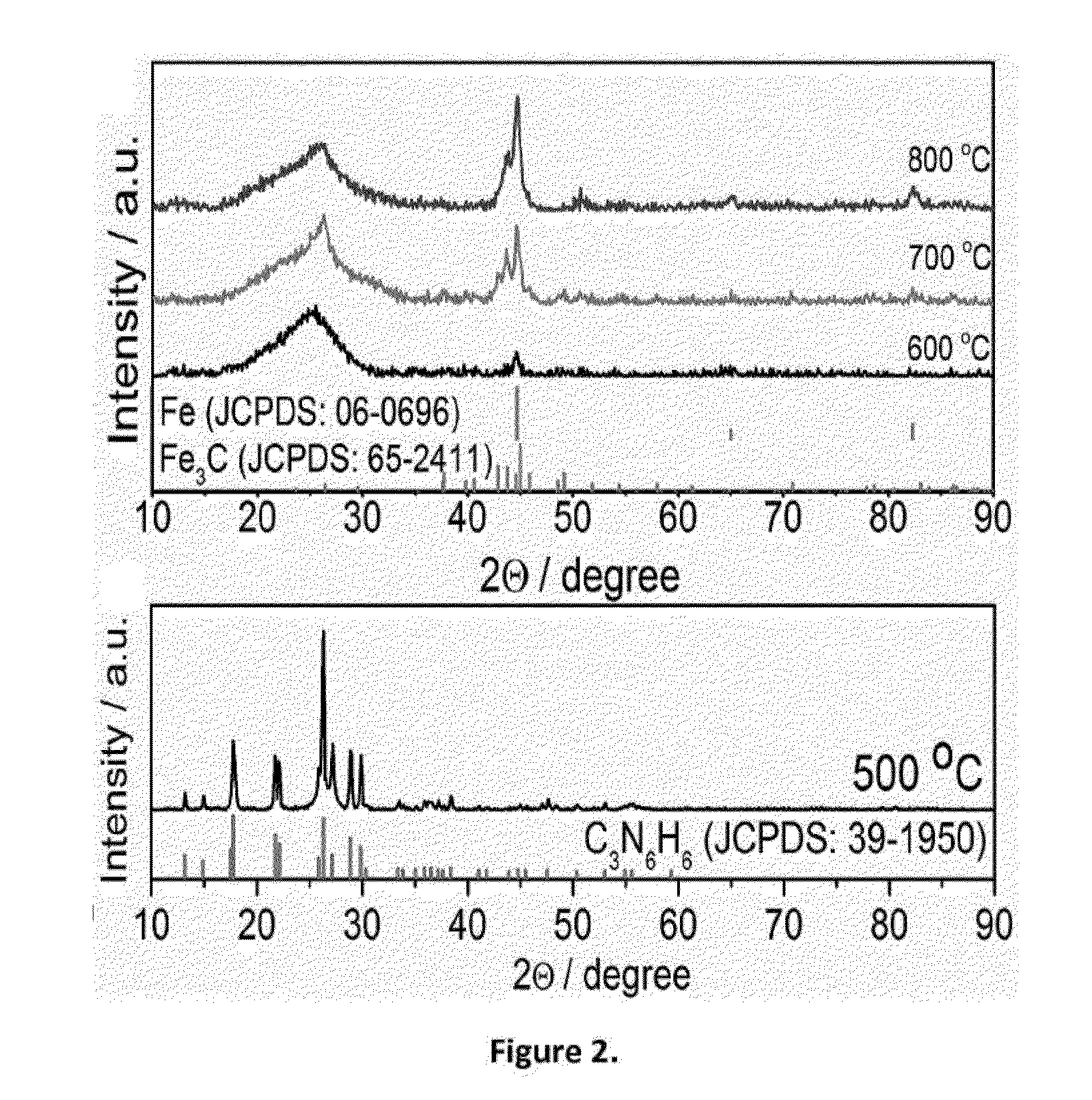Novel Non-Platinum Metal Catalyst Material
a non-platinum metal catalyst and catalyst technology, applied in the direction of fuel cells, electrical equipment, electromechanical equipment, etc., can solve the problems of insufficient active and prohibitively high cost catalysts, significant fraction of the cost is from noble metal catalysts, and it is difficult to find materials that are active and stable for orr
- Summary
- Abstract
- Description
- Claims
- Application Information
AI Technical Summary
Benefits of technology
Problems solved by technology
Method used
Image
Examples
example 1
Synthesis of Fe3C / C—S-700 Catalyst
[0051]In this and all following examples, an autoclave was assembled from home-made stainless steel parts with Swagelok-like structure. A ½″ union part was plugged on both sides by two stoppers. A specially designed quartz cup was placed in the autoclave, after which the precursors were inserted. The precursors of 0.467 g cyanamide (CN2H2) and 0.052 g ferrocene (Fe(C5H5)2) corresponding to a molar ratio of nearly 40:1 were mixed and introduced into the autoclave (ca. 3.3 mL) at room temperature in a nitrogen-filled glove box. The autoclave was closed tightly and placed at the centre of a tube-furnace under a N2 flow to protect the outside surface of the autoclave at high temperature. The temperature of the furnace was raised to 700° C. at a rate of 10° C. / min and maintained at that temperature for 3 hours. By assuming decomposition of the precursors into simple gaseous molecules like N2 and CHx, the pressure inside the autoclave would be above 6.0×1...
example 2
Synthesis of Fe3C / C-40 / 1-500 Catalyst
[0053]The same autoclave assembly as described in Example 1 was used. The precursors of 0.467 g cyanamide (CN2H2) and 0.052 g ferrocene (Fe(C5H5)2) corresponding to a molar ratio of nearly 40:1 were mixed and introduced into the autoclave (ca. 3.3 mL) at room temperature in a nitrogen-filled glove box. The autoclave was closed tightly and placed at the centre of a tube-furnace under a N2 flow to protect the outside surface of the autoclave at high temperature. The temperature of the furnace was raised to 500° C. zo at a rate of 10° C. / min and maintained at that temperature for 3 hours. Then it was gradually cooled to room temperature and opened.
[0054]The powder had a sphere morphology as shown in FIG. 1a. The spheres were however solid. XRD showed clear crystallines of melamine, which was apparently formed from polymerization of the cyanamide. The metal species was well dispersed in the spherical structure, however, no metal carbide is formed at ...
example 3
Synthesis of Fe3C / C-40 / 1-600 Catalyst
[0055]The same autoclave assembly as described in Example 1 was used. The precursors of 0.467 g cyanamide (CN2H2) and 0.052 g ferrocene (Fe(C5H5)2) corresponding to a molar ratio of nearly 40:1 were mixed and introduced into the autoclave (ca. 3.3 mL) at room temperature in a nitrogen-filled glove box. The autoclave was closed tightly and placed at the centre of a tube-furnace under a N2 flow to protect the outside surface of the autoclave at high temperature. The temperature of the furnace was raised to 600° C. at a rate of 10° C. / min and maintained at that temperature for 3 hours.
[0056]The powder had a porous sphere morphology as shown in FIG. 1b. The spheres appeared porous, with formation of uniformly dispersed metal carbide particles. The particle size was in a range of less than 20 nm. The carbon phase is primarily in form of nanotubes. The XRD pattern showed a small peak (FIG. 2) characteristic of the crystalline metal carbide. Further ana...
PUM
| Property | Measurement | Unit |
|---|---|---|
| size | aaaaa | aaaaa |
| size | aaaaa | aaaaa |
| pressure | aaaaa | aaaaa |
Abstract
Description
Claims
Application Information
 Login to View More
Login to View More - R&D
- Intellectual Property
- Life Sciences
- Materials
- Tech Scout
- Unparalleled Data Quality
- Higher Quality Content
- 60% Fewer Hallucinations
Browse by: Latest US Patents, China's latest patents, Technical Efficacy Thesaurus, Application Domain, Technology Topic, Popular Technical Reports.
© 2025 PatSnap. All rights reserved.Legal|Privacy policy|Modern Slavery Act Transparency Statement|Sitemap|About US| Contact US: help@patsnap.com



